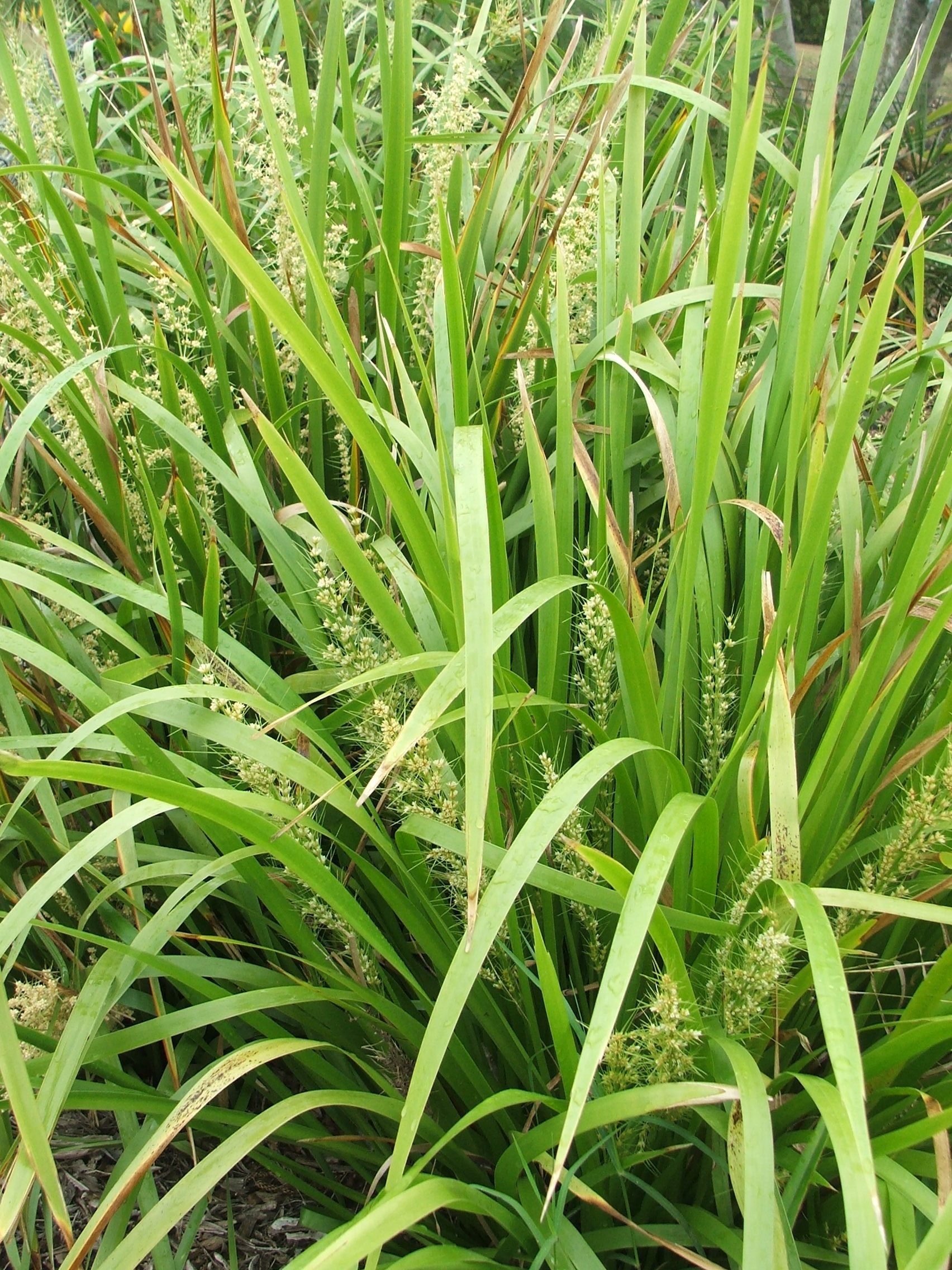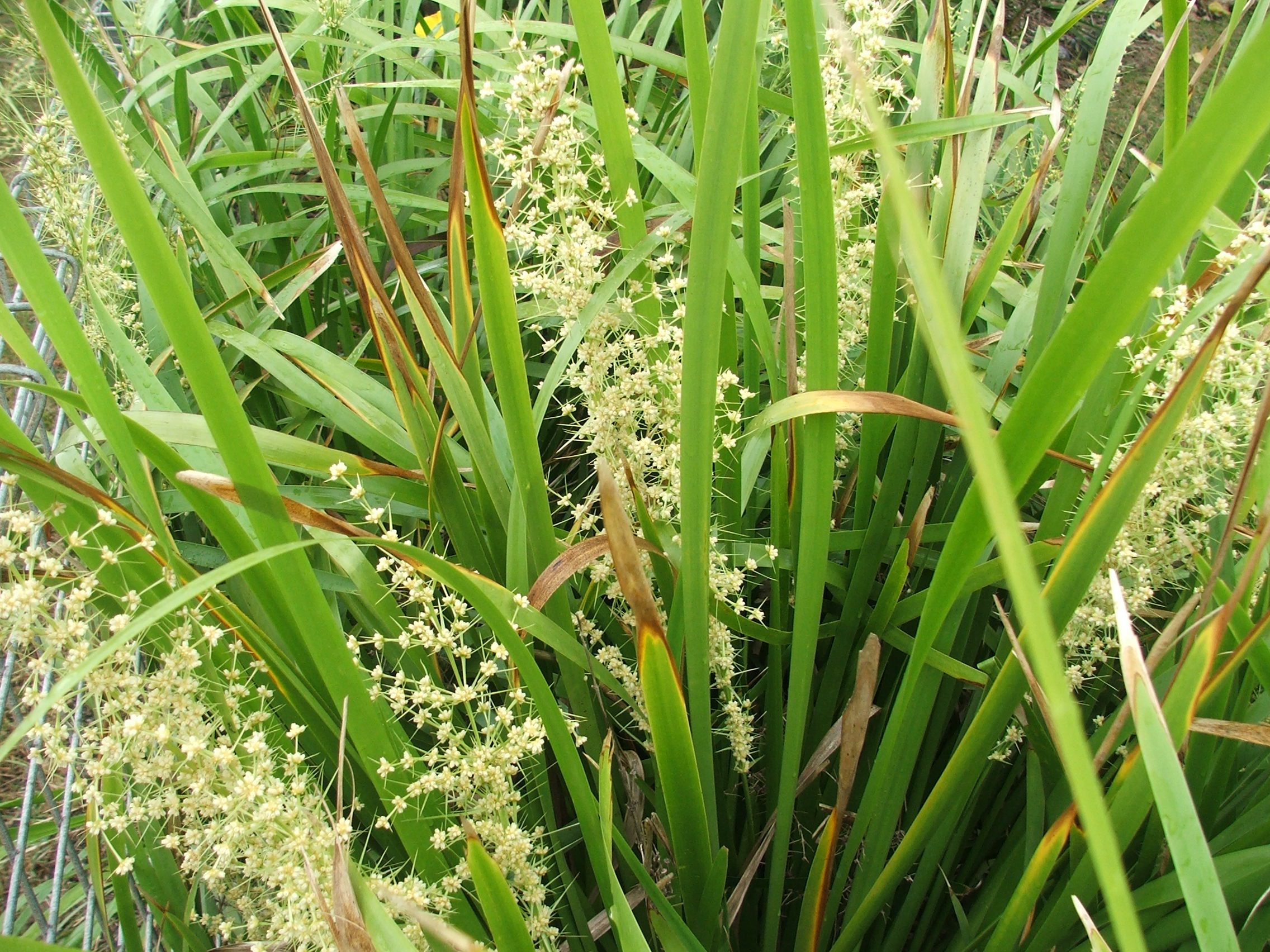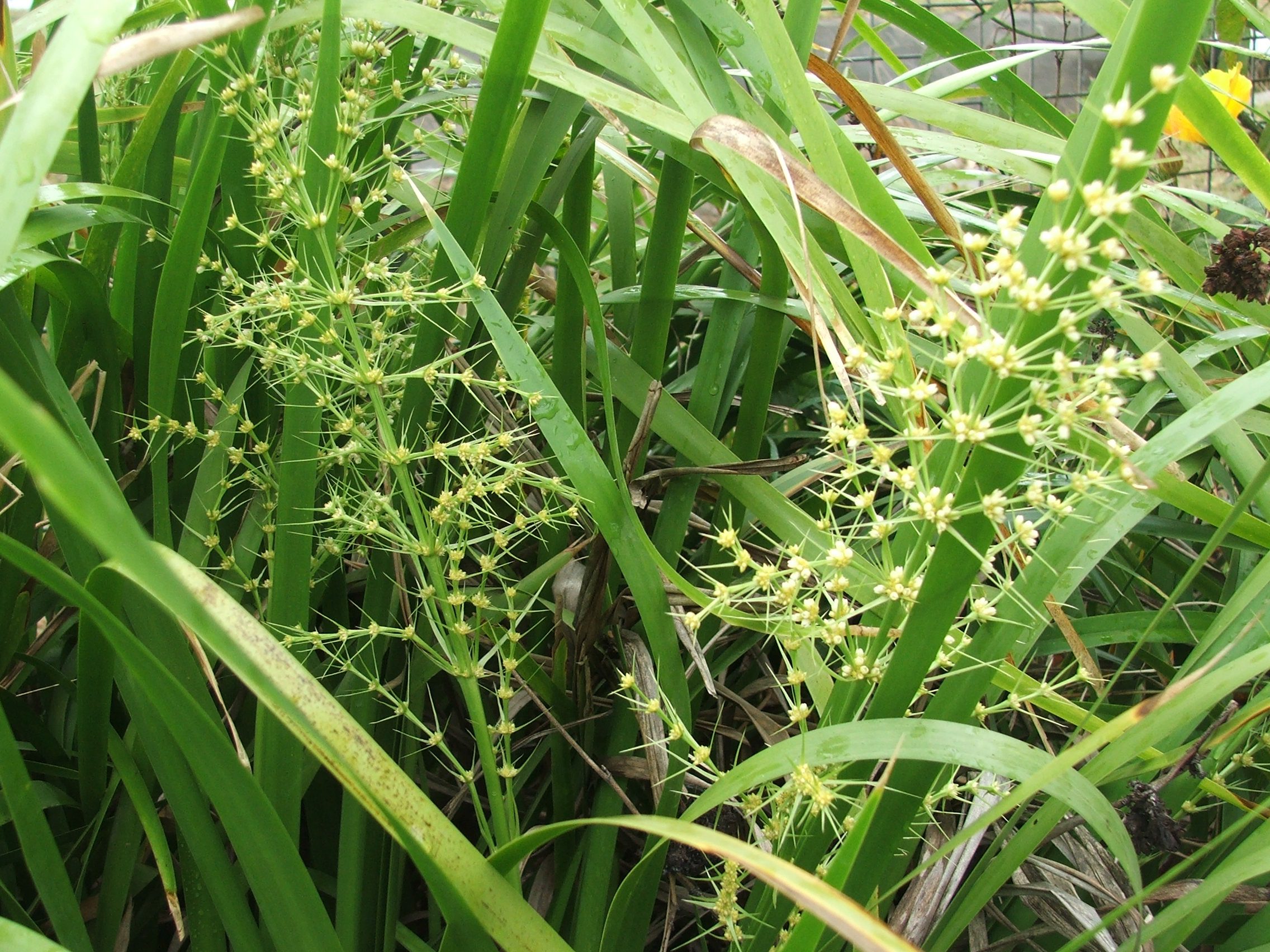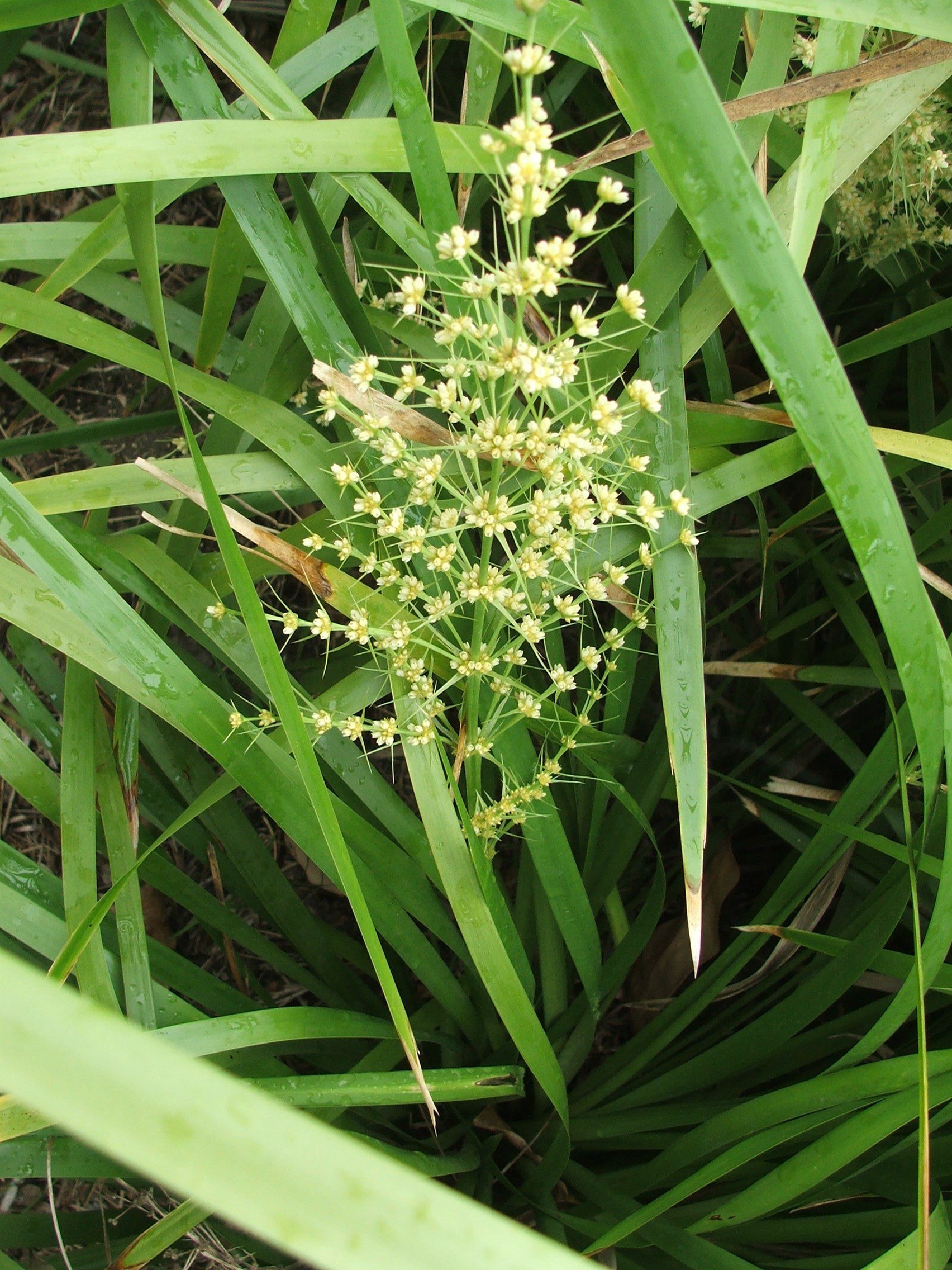Matrush
Lomandra longifolia, Fam. Laxmanniaceae










Clumped plant with long, straight, relatively flat leaves.
| Weed Category: | |
| Weed: | No |
| Form or habit: | Grass or grass-like plant |
| Family: | Laxmanniaceae |
| Leaf: | Linear, flat to slightly concave to convex, sometimes rolled, 50-100 x 0.4-0.8cm. Apex has two or three teeth. |
| Flower conspicuous: | Conspicuous |
| Flower colour: |
Yellow, Cream, Purple |
| Flower description: | Panicles of flower clusters with conspicuous bracts that are no longer than the flowers; petals creamy yellow and sepals yellow or purplish. Male and female inflorescences occur separately but are similar in appearance. Spring to summer. |
| Fruit conspicuous: | Conspicuous |
| Fruit colour: |
Brown |
| Fruit: | |
| Fruit description: | Brown capsules, about 5mm long. |
| Habitat: | Woodland. |
| Distribution | Queensland, New South Wales, Victoria, Tasmania. |
| Food source for: | Larval food plant of the black ringed ochre, brown ochre, orange ochre, silver studded ochre, small orange ochre, southern silver ochre, splendid ochre and yellow ochre butterflies. |
| Toxicity: | No toxicity known |
| Origin: | Australia. |
| Notes: | Resprouts from the rootstock after fire. An attractive species for gardens. Grow from fresh seed or division of clumps. The white leaf bases are edible with a flavour resembling green peas. Lomandra longifolia is readily distinguished from L. hystrix because it has two to three apical teeth, whereas L. hystrix has a pointed apex with the teeth usually occurring well below the apex. The surface of L. hystrix fruit is transversely ridged. |
| Information sources: | Melzer R. & Plumb J. (2007) Plants of Capricornia. |